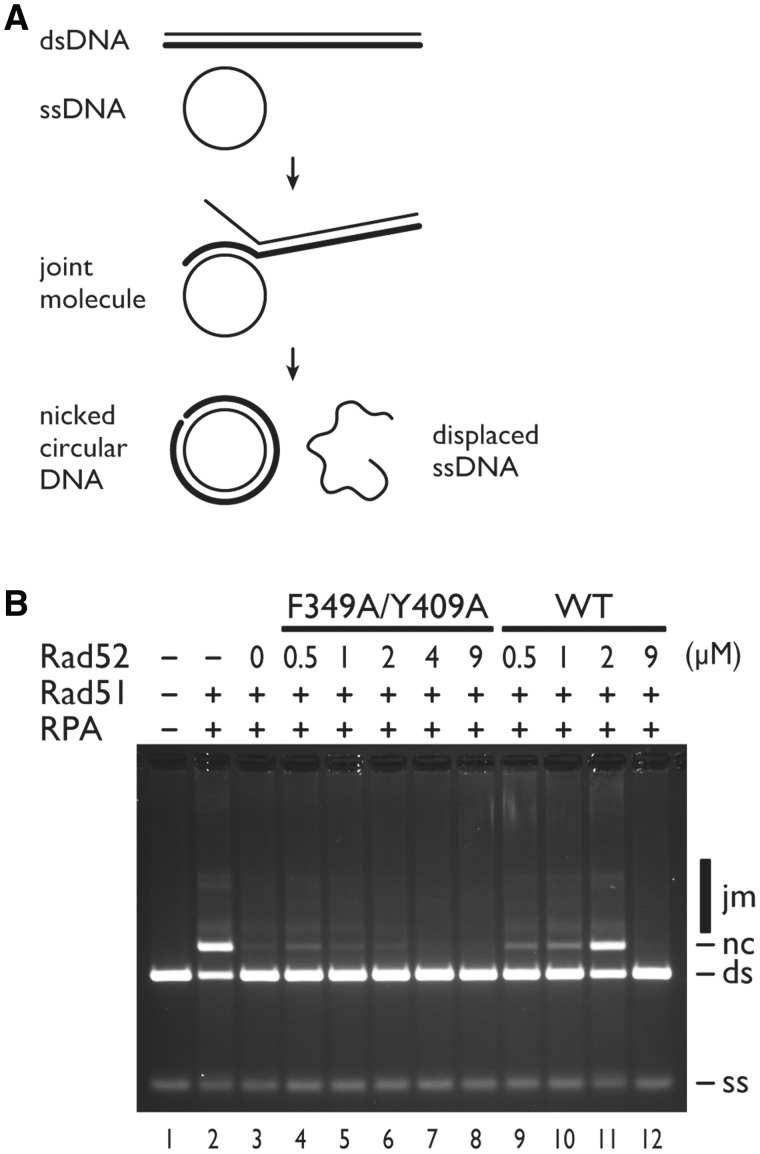Figure 5.
Recombination mediator activity of the Rad52 F349A/Y409A mutant assessed by a DNA strand exchange assay. (A) Schematic representation of the DNA strand exchange reaction. Circular ssDNA (ss) and linear dsDNA (ds) base pair to form a joint molecule (jm), in a process called homologous pairing. The joint molecule is converted into a nicked circular DNA (nc) by DNA strand exchange. (B) A standard reaction was performed by pre-incubating Rad51 (9 µM before the addition of dsDNA) with ssDNA (30 µM before the addition of dsDNA), followed by the addition of RPA (2 µM before the addition of dsDNA) and then by the addition of 1 µl dsDNA (30 µM final concentration) to start the reaction (lane 2). Co-incubation of Rad51 and RPA resulted in the severe inhibition of the DNA strand exchange reaction (lane 3). The inclusion of the indicated amounts of Rad52 (lanes 9–12) or the Rad52 F349A/Y409A mutant (lanes 4–8) led to various degrees of reaction restoration. The indicated concentrations of Rad52 are those before the addition of dsDNA.

